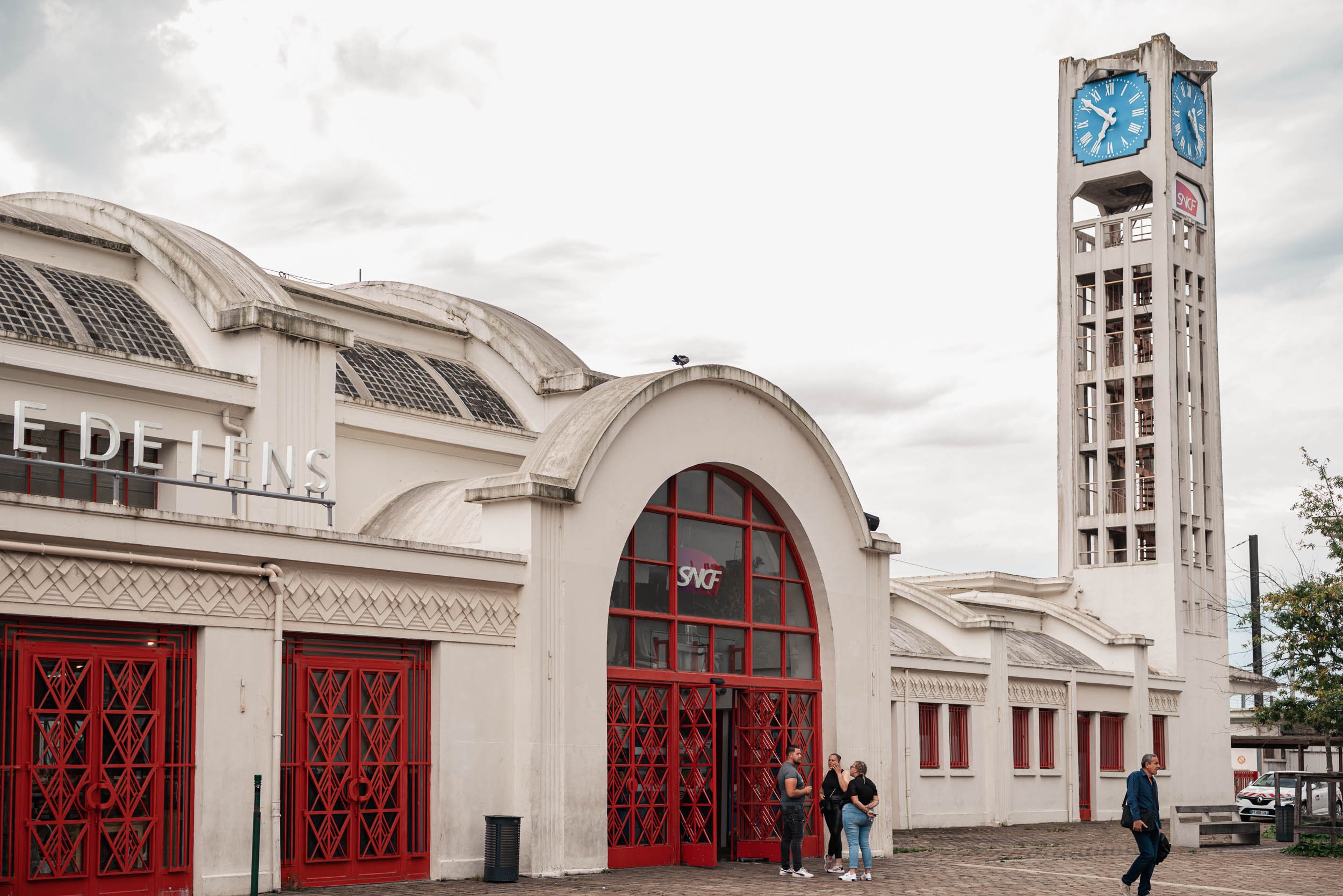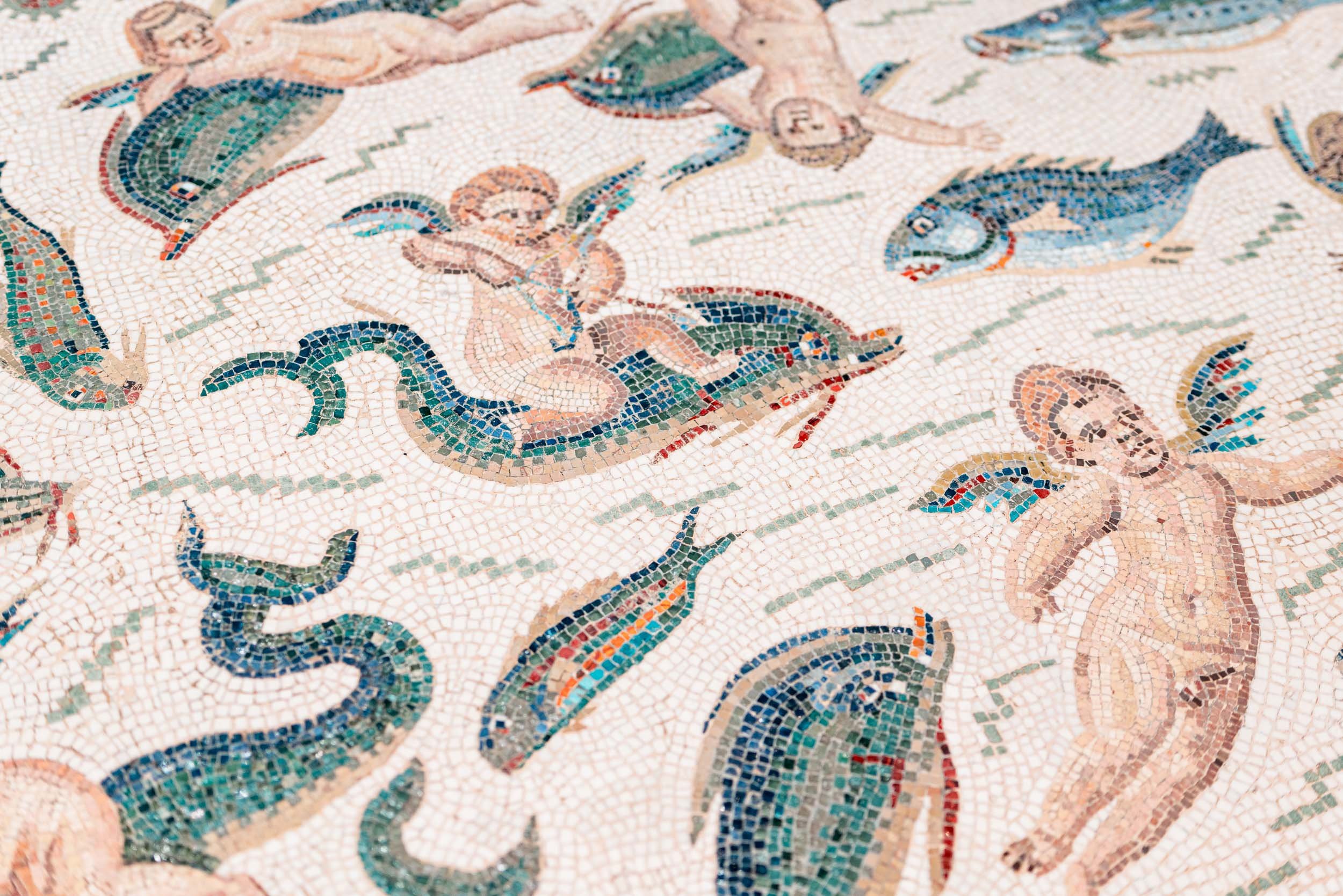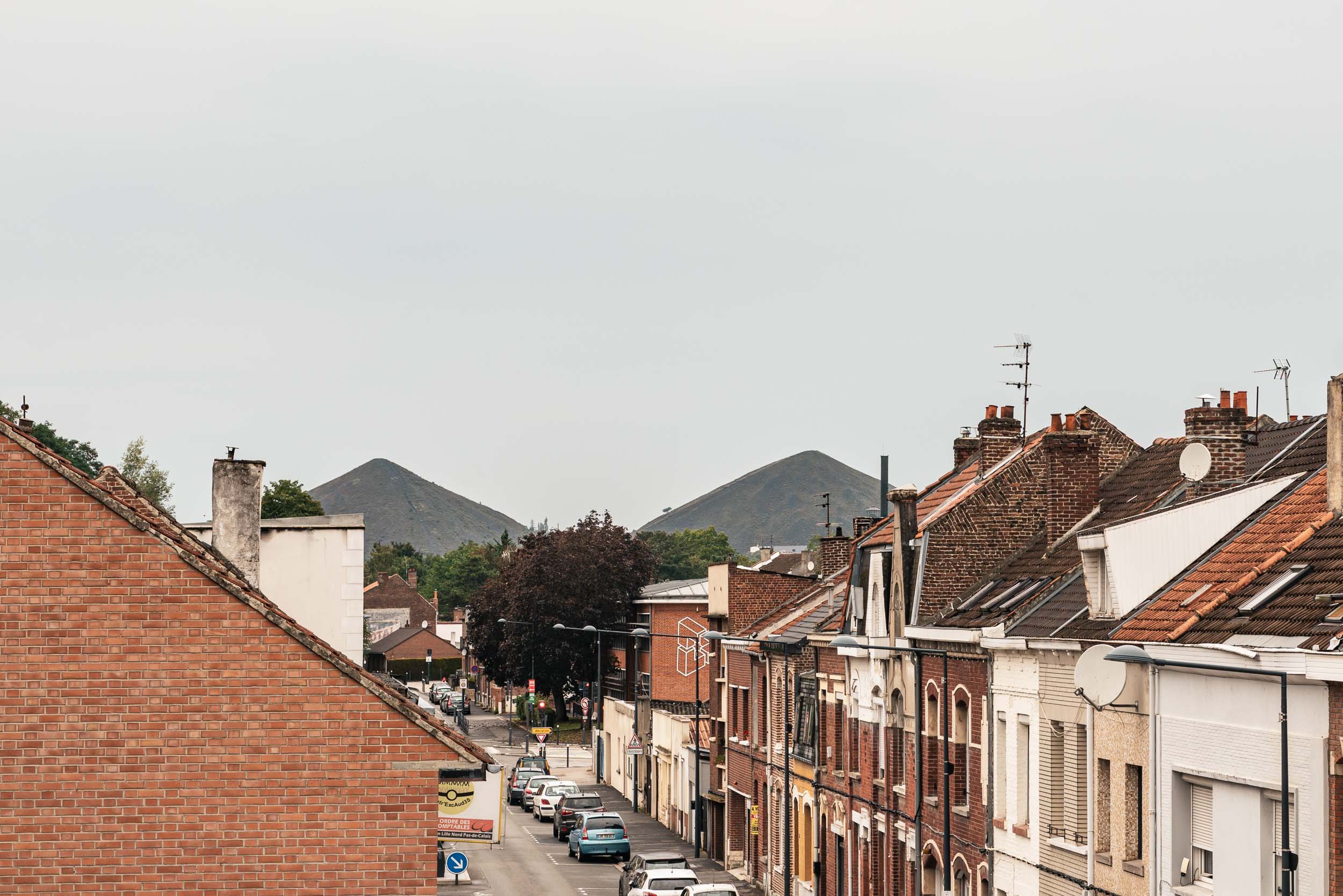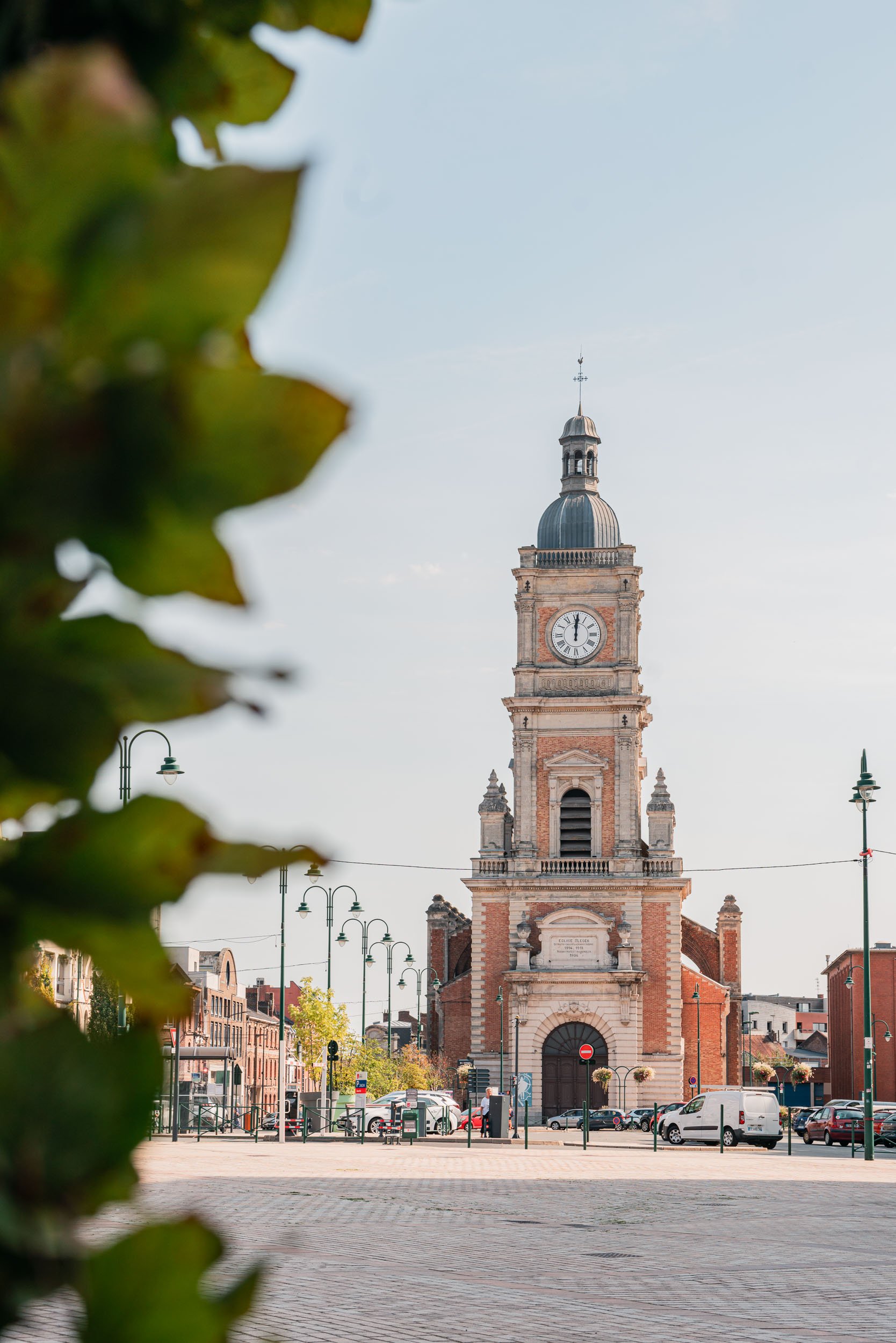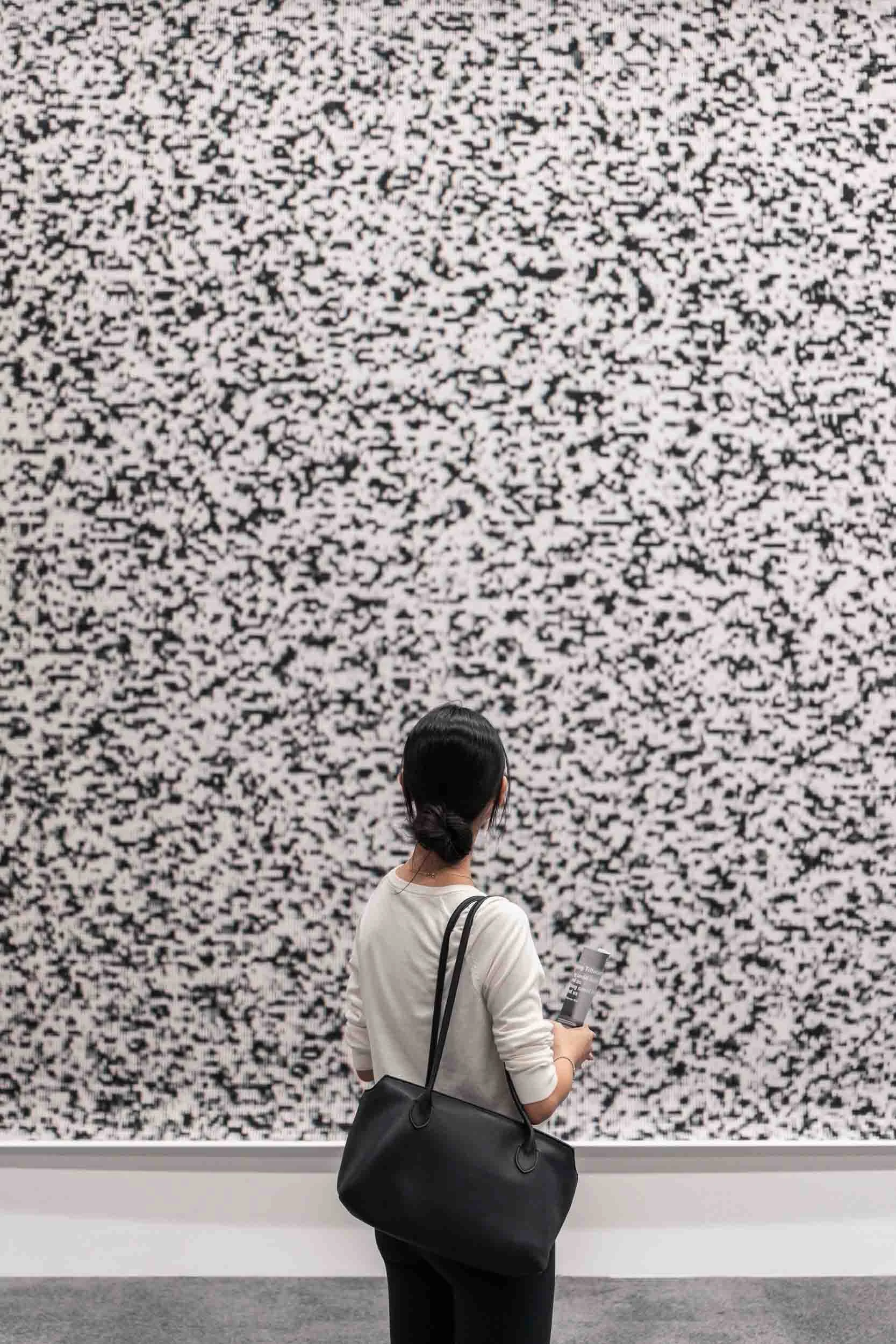Day Trip to Lens: An Evolution from Combat to Coal and Culture
Lens is known for its mining heritage in northern France near the Belgian border. It began as a small farming village that proliferated during the Industrial Revolution of the 19th century, driven by the discovery of rich coal deposits underneath the city, which transformed Lens into a bustling centre and attracted immigrant workers.
Today, Lens has the feel of a medium-sized French town, with wide boulevards bisecting the city, dotted with residential tower blocks typical of northern France. Although mining has long ceased, the city pays homage to its mining past and retains an urban landscape displaying remnants of its past mixed with contemporary developments (most notably the Louvre-Lens museum).
Having witnessed great battles in World War I, Lens is also home to large-scale war memorials that will put the brutality of warfare into perspective and leave behind a haunting impression.
Contents
Getting to Roubaix
By Train
Lens is an accessible day trip location regardless of whether you stay in Lille or Paris.
Trains run several times an hour from Lille-Flandres, with a fast train journey in just 40 minutes. From Paris, trains depart less often from Gare Du Nord but are just as convenient, with a journey time of under 80 minutes.
What to See and Do
Louvre-Lens
Did you know there was an off-site Louvre in France? The Louvre-Lens sits on the brownfield site of a former mine pithead, symbolising the region’s renewal and the Louvre’s goal of making its national collections more accessible.
The museum was designed by the Japanese architects Kazuyo Sejima and Ryue Nishizawa of SANAA, who deliberately avoided the large vertical structures often favoured by architects. Instead, they created a single-level building with a linear, horizontal form, a subtle nod to the mine tunnels of the old days. The main structure consists of five volumes, a large square and four rectangles, with only the corners joined, like boats on a river gently moored to one another. Their arrangement evokes the Louvre Palace, articulated around a central pavilion, onto which are grafted two overlapping wings.
As you approach the museum through the park grounds, a delicate, luminous form emerges gradually – the main structure following the site’s gentle slope without ever exceeding six metres in height, leaving treetops visible. Wrapped in floor-to-ceiling windows and sheets of anodised aluminium, the building melts away seamlessly and feels barely there. It recomposes the surroundings by offering glimpses of the foliage beyond while reflecting a hazy and blurred landscape, constantly shifting and playing tricks on the eyes. We ran into a rainstorm while at the museum, and boy, the pitter-patter on the ceiling and the fog that shrouded it gave it an almost ethereal beauty.
At the heart of the museum lies Galerie du Temps (Gallery of Time), the Louvre-Lens’ only permanent (and free) gallery spanning a spectacular open space 120 metres long and covering 3,000 metres square.
Over 200 masterpieces are on loan from the Louvre, drawing many to the museum despite its unconventional location. Although the gallery is permanent, its works are not – part of the collection is renewed every year on the date of the Louvre-Lens’ anniversary in December, providing new masterpieces to discover every time you visit. As it is, the Louvre has lent more works to the Louvre-Lens than any other museum: over 3,000 artworks have been on loan. In a way, the Louvre-Lens is a distilled and much more manageable version of the Louvre’s extraordinary maze of artwork and rooms that many find overwhelming.
The entrance offers a sweeping view of the hall before the floor gently dips to follow the slope of the terrain downwards, inviting visitors to descend as the exhibition unfolds. Like the building’s exterior, the gallery’s internal walls are also clad in aluminium with no outside openings. The only light is an even, diffused glow from the ceiling and skylight. The hazy reflections, compounded with the light concrete floor and minimal display furniture, make the artwork seem to float and reverberate across the room.
A swathe of human history and culture is presented in a single unbroken space, from the invention of writing in the 4th millennium BC to the Industrial Revolution in the mid-19th century. A time frieze engraved on the wall guides visitors through 5,000 years, while works belonging to the same civilisation are grouped into clusters geographically on a map. This subtle interplay across time and space reveals borrowings and exchanges, encouraging visitors to voyage through the collection and discover it afresh.
An extension of the Galerie du Temps, the Pavillon de Verre (Glass Pavilion) is an exhibition space for temporary themes that opens onto the park and is flooded with light.
Beyond the museum is a 20-hectare large park with 11 entrances, designed by French landscape architect Catherine Mosbach. After the coal mining site shut down in 1960, the shale and sandstone deposits became a refuge for diverse flora, and over time, these passages became genuine biological corridors preserving rare plant species. The former haulageways along which coal was transported are now reminiscent of Baroque gardens with woodland, meadows and ponds and can be crossed by foot or bicycle. It extends as a link between the building and the town and presents a lovely place for a stroll or mindless wander.
Graffiti under the bridge on Rue Arthur Fauqueur
Getting to the Louvre-Lens requires half an hour’s walk from the train station and feels a little tricky. You want to turn right once you hit the end of the graffiti tunnel under the bridge on Rue Arthur Fauqueur into a grassy lane that takes on an S-shaped curve on the map. It looks indirect, but it’s the start of the park that runs all the way to the museum with footbridges. It offers glimpses of the Bollaert-Dellelis Stadium and slag heaps (the conical hills on the outskirts of town) and runs past contemporary installations dot the park grounds, including Shiver House V2, designed by Neon from the UK and Rencontre (Encounter), a playful sculpture by ARTIMUSE for the Parc en fête 2023.
Rencontre by ARTIMUSE
Shiver House V2 by Neon
Slag Heaps
Coal mining transformed not only the economy of Lens but also its landscape, now marked by enormous coal slag heaps visible for kilometres around. Known as “terril” in French with a silent “l”, these conical giants were created by the accumulation of mining waste. They are just as impressive when admired from afar, but if you plan on going up the trails, make sure you have the right footwear.
Base 11/19
Near the twin slag heaps of Terril 74 is a former mining site (écopole) preserved with buildings dating from 1923 and a modern concrete winding tower that stands 66 metres tall. It now hosts cultural, economic and environmental activities, symbolising new developments for the commune.
Twin Slag Heaps of Loos-en-Gohelle (Terril 74 and 74a)
The twin slag heaps from the 11/19 coal mining area peak at 186 metres and are visible for more than 40 kilometres. They form the highest artificial mountains in Europe, and have been listed as a UNESCO World Heritage Site.
While Terril 74 is closed for heritage preservation, a trail leads to the summit of the western cone, Terril 74a. The black soil is covered with local flora and fauna, supporting an ecosystem of birds and reptiles. The trail starts easy until you hit the plateau, a flat slag heap separating the two peaks that makes a fantastic viewpoint at sunrise or sunset. The slope then steepens to reach the lookout point, but it’s worth the journey for a panoramic view of the mining basin. The trail typically takes about an hour to complete.
Parking is available on Rue Léon Blum, but you can also get to the twin heaps by bus. Take Tadao line 19 from “Centre-Ville” or “Gares / Quai 5” to “Site du 11/19”.
Pinchonvalles Slag Heap (Terril 75)
Spreading over 1.5 kilometres to Avion and Liévin, the Pinchonvalles slag heap is the longest in Europe. It resembles an overturned liner stranded in the plains, with an elongated profile comprising three successive plateaus and a mosaic of habitats, making it a refuge for wildlife. Trails run through it and all the way to its top.
Arena Terril Trail (Terril 94)
Part of the Parc des Berges de la Souchez, this slag heap in Noyelles-sous-Lens has been converted into a trail running stadium. It’s equipped with stairs, a multi-surface track and even a CrossFit zone (all freely accessible) to improve trail running and general fitness. There’s even a Trail School to initiate young people into trail running on this atypical terrain and to make them aware of the preservation of nature.
The Bollaert-Dellelis Stadium
The stadium is between the former Lens mining pits 1 and 9, built in the 1930s by miners laid off due to the economic crisis. The stadium has been home to the Racing Club de Lens (more often known as RC Lens or just Lens), a strong rival of the neighbouring LOSC Lille, since 1934 and has become a temple to football.
Renovated and extended on several occasions, it now accommodates over 40,000 people seated—more than the entire population of Lens.
The tourism office offers guided tours with access to the press room, the stands and the pitch.
Canadian National Vimy Memorial
Canadians may find the memorial familiar: it graces the green $20 bill issued by the Bank of Canada.
Located in the heart of a forest at the site of Canada’s victory during the Battle of Vimy Ridge in WWI, this gleaming white memorial honours all Canadians who served during the war. Although the memorial is not in Canada, it is actually on Canadian soil, as the French government ceded Vimy Ridge and its surrounding land to Canada in perpetuity.
Designed by Canadian sculptor and architect Walter Seymour Allward, the monument features two 30-metre-high pylons. With a maple leaf carved in one and a fleur-de-lis in the other, the pylons represent the nations of Canada and France united to fight for peace and freedom. Twenty symbolic figures adorn the monument, representing virtues such as Justice, Hope, Charity, Faith, Honour, Truth and Knowledge, with Peace at the top and reaching upwards with a torch.
More notably, the monument also bears the names of 11,285 Canadian soldiers who died in France with no known final resting place. These words are inscribed in French and English at its base: “To the valour of their countrymen in the Great War and in memory of their sixty thousand dead, this monument is raised by the people of Canada.”
In a landscape still dotted with shell holes and mines covered with a coniferous forest, Canadian student guides host guided visits, 30 minutes long, to explore the area’s preserved system of trenches and tunnels.
Memorial 14-18
History Centre
In the middle of an open landscape, the contemporary building stands out soberly in black concrete cubes called “chapels”, designed by Pierre-Louis Faloci.
The display of historical objects, photos, period films, and animated maps gives an understanding of the harrowing conflict in Nord-Pas-de-Calais during WWI, which caused nearly 580,000 casualties of 40 nationalities. The soldiers’ army data sheets can be consulted on digital tablets in the remembrance area.
Allow two hours for a thorough visit. Guided tours are also available every Sunday at 3 p.m.
Ring of Remembrance (L'Anneau de la Mémoire)
Inaugurated in 2014, 100 years after the start of WWI, the Ring of Remembrance is an international memorial engraved with the names of almost 580,000 soldiers who lost their lives in Nord-Pas-de-Calais during the war.
Created by Philippe Prost, the Ring has a concrete perimeter of over 345 metres, including 56 metres cantilevered over the side of the hill. Its unique shape evokes fraternity, reminiscent of a circle of children holding hands, and emphasises the fragility of peace.
On 500 metal panels, the fallen are united in a posthumous brotherhood. Names follow one after the other alphabetically and, for the first time, without reference to nationality, rank, gender, or religion. Walking around the circle, you may spot your surname from your predecessors or distant cousins.
The site is floodlit after dark until 11 p.m.
Notre-Dame de Lorette Necropolis (Nécropole nationale de Notre-Dame-de-Lorette)
Ablain-Saint-Nazaire was the scene of one of the first battles of WWI. Today, the temporary cemetery created during the Battle of Artois has become a necropolis encompassing more than 150 cemeteries. This is the final resting place of more than 42,000 soldiers who lost their lives on the French and Belgian fronts, making Notre-Dame-de-Lorette the largest necropolis in the country.
At the centre rise a lantern tower and basilica designed by architect Louis-Marie Cordonnier, watching over the soldiers. Like a lighthouse, the light projected from the top of the tower can be seen from dozens of kilometres in all directions.
More than 4,500 honour guards are volunteers who give one day of their time per year to watch over the site of memory. If needed, they can help you find a grave.
Saint-Legér Church of Lens (Église Saint-Léger de Lens)
The original church was destroyed during WWI; its only remnants are a statue of the Virgin Mary found amongst the rubble. While the present church was rebuilt in a very close style, the structure is no longer made of stone but reinforced concrete to counter the risks generated by mine galleries passing under the city.
Park on the Banks of the Souchez (Parc des Berges de la Souchez)
To the east of Lens is a massive park that sprawls across several communes, including Loison-sous-Lens, Noyelles-sous-Lens, Harnes, Courrières, and Confluence. 10 kilometres of trails run along the canal, inviting families to explore the marshes and meadows on foot or by bike at their own pace.
What to Eat
Poulet d'Enfer
The “Chicken from Hell” serves homemade cuisine with 100% free-range poultry from Hauts-de-France, including salads, casseroles, pasta, and burgers. The artisanal chicken rillette served with pickles was hands-down our favourite. As with tradition, their fries are double-cooked with homemade beef fat. Beware: portions are incredibly generous.
They have also partnered with Brasserie Castelain to offer their label, La Bière d’Enfer, the blond beer from hell.
O Mexicain
I’m always down for some Mexican cuisine, who doesn’t like nachos and wings washed down with a classic cocktail? If you’re craving fajitas, tacos and guacamole, O Mexicain serves homemade dishes with fresh products right around the corner from the train station.
Brasserie Saint Théodore
Located outside the Louvre-Lens park is Saint Théodore, a restaurant and brewery with a greenery view.
The restaurant serves seasonal and regional products, including artisanal fries made with untreated potatoes from a local farm and desserts from the Jeanson patisserie.
More interestingly, the brewery is directly visible inside the restaurant and offers two artisanal beers, “La Lensoise” and “Coeur de braise”, with northern aromas highlighting local heritage and traditions. Non-drinkers can also opt for natural lemonade made with fructose rather than sucrose.
Jeanson
The tea room, with an Art Deco facade dating back to 1939, is a family business passed down through generations. It’s currently run by Jean-Claude Jeanson, who enjoys telling the region’s story through his desserts.
His creations include Ch’terril, a small cake shaped like a slag heap made of butter and almond shortbread with a chestnut or blackberry cream. Another speciality of theirs is the Legendary Chocolates, and he enjoys using local plants, such as yarrow, which grows on slag heaps, and lavender, which brought good luck to the miners going down the tunnels.
L'Autre Estaminet
L’Autre Estaminet is a community cafe on a mission to reduce health problems caused by bad eating habits and excessive alcohol consumption. They serve organic fruits and light meals, including soups, croque-monsieurs, and pancakes. In the middle, a tree shelters customers while they eat and gather for a board game or creative workshop.
Le Galibot
Hotel Louvre-Lens’ restaurant and bar serves gourmet French cuisine in a warm, welcoming setting. Every bite tells an exciting story, with seasonal ingredients grown locally and often worked with a vegetarian twist. If you’re looking for a more upscale location for a private dinner, Le Galibot is the best spot in town.
L'Atelier du Cerisier
L’Atelier du Cerisier is the Lens branch of the Michelin restaurant in Lille, which only opened in February 2023. Encased in a circular glass form, the restaurant blends in with the Louvre-Lens perfectly on the park grounds and offers a museum view.
Chef Elie Beghin crafts a gastronomic menu that combines tradition and modernity and is renewed weekly to adjust for seasonal and regional products.
For a more casual meal on the go, head to La Pause du Cerisier, the Louvre-Lens cafeteria instead.
Where to Stay
ibis Styles Lens Centre Gare
A more budget-friendly option across the train station, the ibis hotel is built on the site of the Apollo, a former theatre and then emblematic cinema of Lens. It has retained a touch of film and songs in its interiors and sports a fun bar perfect for a pint of beer before you head back on your return journey.
Hôtel Louvre-Lens – Esprit de France
The hotel is housed in a row of former miner cottages, a striking, low-rise building opposite the Louvre-Lens entrance on Rue Paul Bert.
The brick walls at the entrance bear visible marks, a testament to the area’s working-class heritage and Lens’ industrial past, which has shaped its landscape. The building maintains an elegant contrast between the traditional and new, preserving the space’s authenticity and injecting a contemporary sense of serenity. Visitors can marvel at the pewter bar and flooring made from old railway sleepers while enjoying the soothing ambience of charcoal black tones.
This post may contain affiliate links, meaning we receive a commission when you click and make a purchase.
Related Posts


